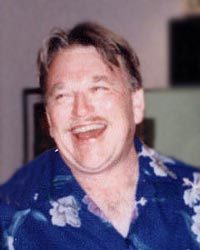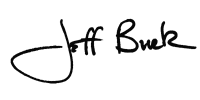
Drag racing needs 6/2/05
To that end, those making the decisions on race day in both sanctioning bodies have, for the last five years or so, apparently have made it their personal goal to ensure their fans are only subjected to watching the professional classes race for that period of time. Both NHRA's Tom Compton and IHRA's Aaron Polburn have made no secret of the fact they will do whatever is necessary make sure their fans don't have to sit eight hours under a blazing sun or in chilly night air in order to see the final rounds. Tom Compton put forth an edict fairly quickly after he came to power that mandated a 75-minute turnaround for Professional class cars. Polburn and Bill Bader before him have taken drastic steps to streamline their shows for the benefit of the spectator. For the most part I applaud their actions. However, I do think that there is drawback to shortening the length of the race day program at the expense of the core attraction of the sport and that I still believe is the actual racing. I'm not sure that the folks in charge at NHRA and IHRA see it that way. I'm thinking they have the idea that the main attraction isn't racing as much as it is "entertainment." I believe their philosophy now is that many drag racing fans are just as happy watching "circus acts" as they are real racing. They evidently believe that as long as there are Fuel cars spewing flames and making enough noise to turn on every car alarm in the parking lot there doesn't have to be side-by-side racing to keep the fans happy and buying tickets. I'm not saying that everyone working at the sanctioning bodies feels this way, but I'm of the opinion that many of the marketing/sales/promotions men and women with no background in the sport do. Maybe they're right. Maybe drag racing's real attraction isn't heads-up competition between racers. Perhaps that kind of racing doesn't deliver the high drama that converts to ticket sales and sponsorships. Maybe all of drag racing's National events are really just outdoor bars trying to attract a paying crowd that expects to be entertained by something, anything spectacular while they drink beer and eat hot dogs for about four hour -- and it doesn't necessarily have to be close racing. Judging from what I'm seeing at races these days both sanctioning bodies' management groups have come to believe the attraction of drag racing is the spectacle not racing. Now, I'm not saying here that there aren't people in both sanctioning bodies who understand and love drag racing and try their best to make rules to encourage close competition. Men like Skooter Peaco, Ray Alley, Graham Light and Mike Baker obviously take great pains to try and make that happen at their events. What I am saying, though, is that the suits those men answer to apparently are much more interested in making sure the wheelstander and fireworks go off on schedule and making the early flight back to headquarters than ensuring the fans in the stands and at home see real racing. At the NHRA event at Topeka, once again on Sunday the spectators paid around $50 to see a non-race. Virtually every race in the fuel classes in eliminations saw the car in the right lane go up in smoke. There are 15 races in eliminations and in the Top Fuel field the winner was in the left lane 10 times. In Funny Car it was even more pathetic with 13 of 15 races won in the left lane. There were a few good races, but overall if a racer had to be in the right lane the odds against him were prohibitive. According to the racers I've spoken with and DRO staffers covering the event, NHRA went into eliminations on Sunday knowing one lane was suspect yet they really did nothing out of the ordinary to try and repair it, even after car and car continued to spin the tires in that right lane. It certainly appeared to me while watching the tape delayed TV broadcast that someone was in a hurry to get the event over on schedule regardless. Undoubtedly some fans were disappointed by the "racing" they saw from Topeka on TV. How does drag racing stack up if a real motorsports fans had watched NASCAR's Coca-Cola 600, where the winner was determined by a pass on the last turn of the last lap, or the Indy 500, where the winner was in doubt until the last few laps, and then tuned into the NHRA Topeka broadcast on ESPN only to watch car after car smoke the tires during eliminations? It's hard enough for dedicated drag racing fans to watch such action; how can we ever hope to attract new fans when two cars can't both get down the track -- time after time after time? I know that the NHRA crews work their butts off trying to make a good track, but the hard fact is that tracks that offer any team a reasonable chance of winning in either lane seem to be going the way of $1.00 a gallon gas. My question is, will fans keep coming to the track or turn on the TV at home just to see the "spectacle" of nitromethane-burning cars? Evidently NHRA thinks so. The newest member of Tom Compton's management team is 31-year-old John Pesetski, recently named as the director of NHRA advertising and promotions. He came to drag racing from three years with the Harlem Globetrotters. He was interviewed by the SportsBusiness Journal (May 23-29, 2005 issue) and stated the reason he was brought in was "... to attract a new audience outside the core motorsports fan." So, does that mean that NHRA has given up on introducing and making drag racing fans out of the hardcore motorsports fan? Does the fan that comes to NHRA or IHRA drag races no longer come for, expect or even care if the nitro cars have close racing? I don't know. I do know this. I'll still buy a ticket to see nearly any kind of racing vehicle that burns nitromethane race, from Outlaw Jr. Dragsters to Top Fuel boats, but I'm really not that interested in watching racing that isn't or exhibitions of speed. I'm a "racing" fan and that's what I want to see at the track and especially on TV. If I want circus acts or exhibitions I'll go to the circus or the rodeo, which, by the way, may be where those non-core motorsports fans that NHRA is going after are getting their entertainment these days. Sadly, for old "core" motorsports fans like myself, referring to NHRA events as "the circus coming to town" has never been more accurate. |
||||||||||||||||||||||||||||||||||||||||||||||||||


 he
general opinion of the people in charge of the IHRA and NHRA these
days seems to be that professional drag racing can't attract fans
and keep them entertained for more than about four hours, no matter
what's happening on the track.
he
general opinion of the people in charge of the IHRA and NHRA these
days seems to be that professional drag racing can't attract fans
and keep them entertained for more than about four hours, no matter
what's happening on the track.
